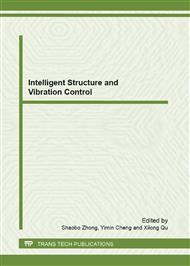p.516
p.521
p.526
p.531
p.536
p.541
p.547
p.554
p.559
Dynamic Response of Supercavitating Underwater Vehicle Impacted by Tail-Slap Force
Abstract:
Based on the movement characteristics of the supercavitating underwater vehicle, the tail impact force has been defined by summarizing related papers, then the dynamic responses of structure has been simulated by using Finite Element Method. The displacement and acceleration responses and corresponding spectrums have been gotten. The calculation results show that: the displacement response along impact force's direction oscillates periodically; the displacement response along body axis lengthens and shortens periodically; the displacement response along the 3rd axis increases over time. The acceleration response along impact force's direction and body axis oscillates periodically. The corresponding spectrums show that: accessories of the underwater vehicle should avoid some scaled frequencies in order to let them run reliably.
Info:
Periodical:
Pages:
536-540
Citation:
Online since:
February 2011
Authors:
Price:
Сopyright:
© 2011 Trans Tech Publications Ltd. All Rights Reserved
Share:
Citation:


